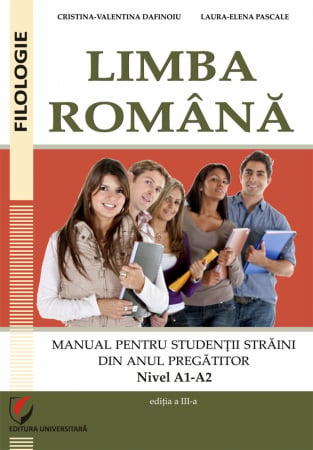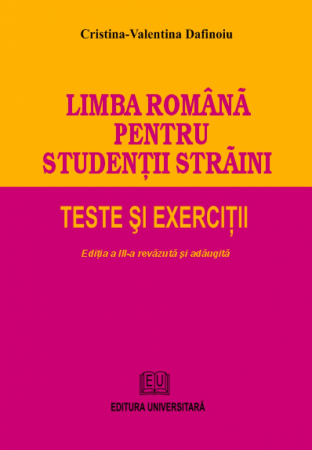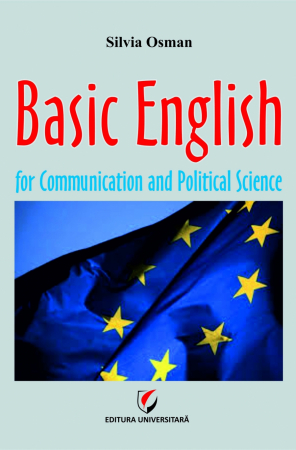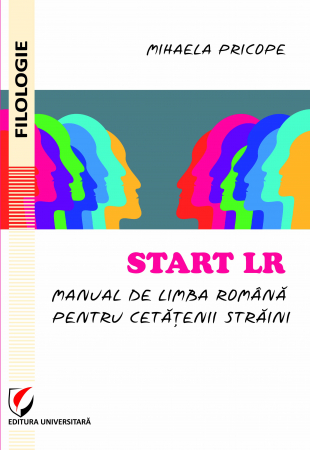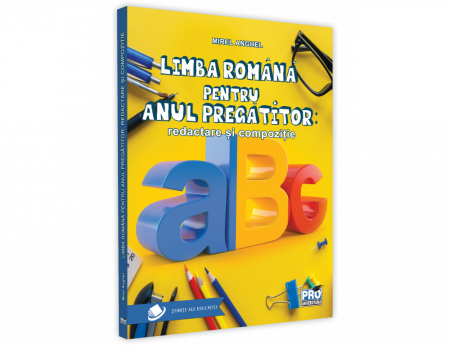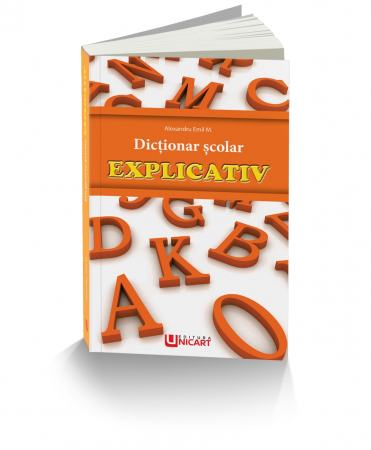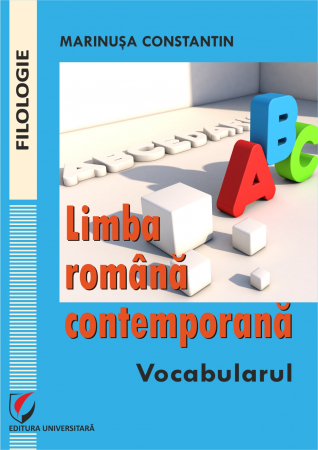Propuneri manuscrise: info@editurauniversitara.ro: 0745 204 115
Urmarire comenzi Persoane fizice / Vanzari: 0745 200 718 / 0745 200 357 / Comenzi Persoane juridice: 0721 722 783
6359.png) Only an adverb? On the syntax and interpretation of restrictive focus adverbial particles in English and Romanian
Only an adverb? On the syntax and interpretation of restrictive focus adverbial particles in English and Romanian
ISBN: 978-606-28-0035-2
DOI: 10.5682/9786062800352
Anul publicării: 2014
Editia: I
Pagini: 195
Editura: Editura Universitara
Autor: Nicoleta Sava
- Descriere
- Download (1)
- Cuvant inainte
- Cuprins
- Autori
- Review-uri (0)
I would first like to express my deep gratitude to Professor Alexandra Cornilescu, without whose help and kind guidance this thesis would not have seen the light of day. She has been a constant help and guiding line while at times my thoughts went astray. I am especially thankful for her devoting her time to me and for her supporting and encouraging words at times where I had lost confidence. Throughout the entire research and writing process she has shown extraordinary understanding for my mistakes and patiently corrected and guided me in my research and writing. My thesis owes a lot to her clarity of mind and insightful comments. She has been a supervisor but also a model of dedication to linguistic research and pursuit of outstanding quality in the analysis.
My appreciation also goes to my colleagues, the members of the English Department of the Ovidius University of Constanta and especially to Camelia Bejan for her help, support and understanding throughout the five-year period of my doctoral studies, dissertation research and writing process. I would also like to thank my other non-linguist colleagues for showing their support throughout this period. My appreciation also goes to my students who showed me their cooperation and kindly answered the questionnaire that I presented to them to the best of their abilities.
I am also indebted to my friends who have provided me their linguistic input as native speakers and, despite thinking that it is impossible to write a thesis on just three words, they have shown their interest and helped me in any way they could. Finally I would like to express my deepest gratitude to my mother for being my greatest supporter. I wish to thank her for her love and care and for supporting me in my efforts by offering to do any non-linguistic and non-academic work in my place. During this entire period she constantly urged me to go further and patiently, but also stubbornly, checked upon my progress and offered her help in any way she could. Even at times where my motivation faltered she stubbornly believed in me and through kind words encouraged me to move ahead towards the completion of this thesis. I would also like to thank my brother and my sister in law for their concern and understanding.
-
Only an adverb? On the syntax and interpretation of restrictive focus adverbial particles in English and Romanian
Descarca
The present work lies at the syntax/ semantics interface, being one of the rare studies that address both fields, to get a better understanding of a linguistic problem. In this case, the problem is the restrictive focus particles in English and Romanian, namely the English only and its equivalents numai and doar.
The topic addressed is of interest since, although there exist in the literature studies on these particles, they are rarely analysed as a class, due to the difficulties they arise both at the syntactic and at the semantic level. Semantically, one must distinguish between the inherent contribution of the particle and that of the focused constituent. Syntactically, the same problem of determining the relation with the focused constituent arises.
The work has a multiple contribution: a) of putting forth for English a complete and unitary syntactic account, that may be extended to Romanian as well; b) of proposing the first analysis of these particles in Romanian; c) of presenting a detailed and unitary semantic analysis (restrictive particles are adverbial quantifiers).
Undoubtedly, during the past decades, the studies on the concept of Focus have exploded, the literature containing research from complementary approaches, as the author points out. There are syntactic theories, which address the syntactic effects of focus deriving from the presence of a focus feature. There are semantic theories, which analyse focus as a quantificational element, investigating its scope, the alternatives introduced, and its effect on the truth conditions, or its interaction with other quantifiers. There are also phonological theories which highlight the prosodic properties of the focused constituent and derive the syntactic effects from prosodic constraints, and there are pragmatic theories that regard information structure as a separate level of analysis where focus plays an essential part in ensuring the coherence, by its property of answering the current question.
The approach of the book is syntactic and semantic, the two components having to correlate and control each other. Syntactically, a focus feature is used, present at Numeration, licensed by integration into a wider domain (informational focus), or by movement to a focus projection in the left periphery of that domain. Semantically, focus is a quantificational operator that introduces alternatives belonging to a certain class of entities. Restrictive focus particles (only, doar, numai) bear on contrastive focus, marked prosodically. This type of interaction between a given constituent, and another one, prosodically marked, has been labelled association with focus. The constituents dependent on focus are described as focus sensitive. Focus particles all share the property of association with focus, but they distinguish themselves by their specific lexical contribution.
An essential observation for the analysis presented in the next chapters is that, although association with focus is dependent on the prosodic marking of focus, the association of the particle with a specific constituent survives even in echoic contexts, where the main prosodic stress is shifted to another constituent, (the previous focus continuing to have some degree of phonological prominence though).
The introduction also contains a brief, but very clear, presentation of the Minimalist Program model implemented. The MP description is accurate and it proves that the author has intimate knowledge of the program. The phase theory is adopted. The analysis put forward is, indirectly, an argument for the advantages of the copy theory of movement. In this model, both LF and PF can access either the head or the tail of a chain, and the two components can process the same copy or different copies, as Bobaljik (1995, 2002) convincingly argues.
An important idea is that post-syntactic operations (such as Reconstruction, Quantifier Raising (=QR)) are constrained by principles of economy. Reconstruction, Quantifier Raising are allowed only if they produce effects at the interfaces. Generally, the generation of alternative configurations with the same semantic interpretation is banned. Chapter 2, The syntax of restrictive particles in English, sets out to specify the categorial status of only, to determine the distribution of this particle and to integrate the description into a broader theory of focus. The three structures analysed are the constructions only-XP, only-VP and left periphery –only.
(John invited only MARY.// John only invited MARY. //Only MARY did John invite).
The author first reviews some important analyses syntactically or semantically oriented: Kayne (1998), Drubig (2000), Buring and Harmann (2001), Herburger (2000). The semantic-syntactic analyses have in common the fact that they identify, in different ways, the quantificational properties of the restrictive focus particles and underline the common semantic effects of only phrases.
Moving on to her own analysis, the author provides a detailed description of the distribution of the particle in order to determine its categorization. Determining the category of the particle is a difficult task since only attaches to any type of phrase: NP/DP/AP/ PP/VP/CP (but not IP!). The more problematic cases are discussed: only appears rarely after prepositions, even in languages with preposition stranding (English or Dutch). The author points out that functional prepositions are more permissive. This restriction is clearly due to the fact that PPs are islands.
A semantic restriction is the fact that only cannot co-occur with universal quantifiers, unless they are modified: The Board will interview only everyone who presented an application on MONDAY.
The aims of the syntactic analysis are related to: (i) specifying the merge configuration; (ii) the distribution in the three positions, only-DP, only VP, LP-only; (iii) the contrast between the syntactic mobility of only phrases and their relatively stable semantic interpretation.
The categorization of this particle raises two problems to solve: if only is a head or an adjunct; b) which lexical category does it belong to. Given that the sentences resulting from reordering the constituents (onlyXP, XP-only) are synonymous, the author assumes that only is a head which projects its associate as complement, which can in turn be reprojected in the specifier position. But the movement of a complement to a specifier position is a case of anti-locality. In principle, the movement takes place to value an uninterpretable feature of the head. But in the case under consideration, valuation could also take place at merge, in the head-complement structure. Given the perfect synonymy of the two orders, the author proposes that antilocality applies to syntax, but not to post-syntactic PF movements. Therefore, only is an acategorial head with two features, [iQ], which introduces its quantificational properties and [uF] which solves the problem of its function as a selecting head. The constituent bearing a [uF] feature searches for a match, that is a constituent with an [iF] feature, which is precisely the focused constituent, from which it borrows a light categorial feature. The merge position thus ensures the association with focus (the head complement relation) and the quantificational feature which requires its movement to the clausal peripheries. Finally, the phrase-internal PF movement of the associate accounts for the order associate + only.
The next question is whether the only phrase is ever interpreted in the base position. The answer is negative, because the in situ position also creates intervention effects. It is important that the intervention effect is in fact created by focus, and it appears in the absence of only too: *He didn’t disclose his PLANS to anybody.
In conclusion, the constructions where only is apparently in situ are based on movement, the in situ effect resulting from the reading of the lower copy of the chain, a position which favours the prosodic marking. (…)
The work is interesting from the perspective of building an integrated linguistic model yielding ultimately referential interpretations (in line with Russell or Montague) of natural language propositions. Through its entire endeavour, the book illustrates the manner in which natural language syntax can offer a manner of selecting from among the multitude of formalization alternatives, often with equivalent descriptive power, proposed by logicians. In other words, the persistent study of the syntax/semantics relation strengthens the position of natural language syntax as a metalinguistic filter, but, equally important, it must contribute to the elaboration of a viable semantic theory, that is relying on strict empirical and axiomatic criteria.
For all these reasons I believe that the author deserves to be congratulated.
Professor Alexandra Cornilescu, University of Bucharest
Acknowledgements/8
Preface/8
CHAPTER I. Introduction/17
1.1. Key concepts/18
1.1.1. Focus/19
1.1.2. Association with focus and the syntax-phonology interface/21
1.1.3. Focus particles/24
1.2. The syntactic framework/26
1.2.1. The Minimalist Program/26
1.2.2. The copy theory of movement/28
1.3. Overview/36
CHAPTER II: The syntax of restrictive particles in English/38
2.1. Introduction/38
2.2. The combinatorial properties of only/39
2.3. The syntax of only/44
2.3.1. Introduction/44
2.3.2. Previous syntactic accounts/45
2.3.2.1. Kayne (1998)/45
2.3.2.2. Drubig (1996, 2000)/48
2.3.3. Previous syntactic-semantic accounts/50
2.3.3.1. Buring and Hartmann (2001)/51
2.3.3.2. Herburger (2000)/54
2.3.4. The merge configuration of only/57
2.3.5. The positions of only in the clause structure/62
2.3.5.1. “In situ” occurrences of only/63
2.3.5.2. The only-vP configuration/66
2.3.5.3. Left periphery occurrences/70
2.4. Conclusions/73
CHAPTER III. The syntax of restrictive particles in Romanian/74
3.1. Introduction/74
3.2. Selection properties of numai and doar/76
3.3. The syntax of numai and doar/87
3.3.1. The Romanian clause structure/88
3.3.2. The merge configuration of numai and doar/94
3.3.3. “In situ” occurrences/99
3.3.4. Left periphery occurrences/107
3.3.4.1. The left periphery in Romance languages/107
3.3.4.2. Left-periphery focus in Romanian/113
3.3.4.3. Numai and doar at the left periphery/116
3.4. Conclusions/121
CHAPTER IV: The semantics of restrictive particles/123
4.1. Introduction/123
4.2. Semantic interpretation of focus/125
4.2.1. Semantic theories of focus/125
4.2.1.1. Alternative semantics/126
4.2.1.2. Structured Meanings/128
4.2.1.3. Focal Mapping Theory/130
4.2.2. Association with focus/133
4.2.3. Association with focus of restrictive particles/140
4.2.4. Focus association problems/149
4.2.4.1. Focus movement and island sensitivity/150
4.2.4.2. Multiple association with focus/154
4.2.4.3. The syntax-semantics mapping/155
4.3. The quantificational properties of restrictive particles/157
4.3.1. Introduction/157
4.3.2. The quantificational range and scope of restrictive particles/158
4.3.3. The scope interactions of only/164
4.3.4. The interaction of only and negation/171
4.4. The scope interactions of restrictive particles in Romanian/173
4.5. Conclusions/178
CHAPTER V: Conclusions/178
5.1. Introduction/178
5.2. Main findings/180
6.3. Further lines of research/188
Bibliography /190
Index of texts included in the corpus/199
Suport clienti Luni - Vineri intre 8.00 - 16.00
0745 200 718 0745 200 357 comenzi@editurauniversitara.ro
![Only an adverb? On the syntax and interpretation of restrictive focus adverbial particles in English and Romanian [1] Only an adverb? On the syntax and interpretation of restrictive focus adverbial particles in English and Romanian [1]](https://gomagcdn.ro/domains/editurauniversitara.ro/files/product/large/only-an-adverb-on-the-syntax-and-interpretation-of-restrictive-focus-adverbial-particles-in-english-and-romanian-948-936348.jpg)
